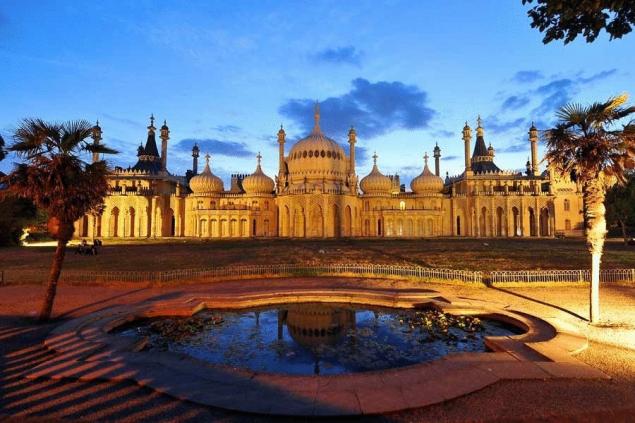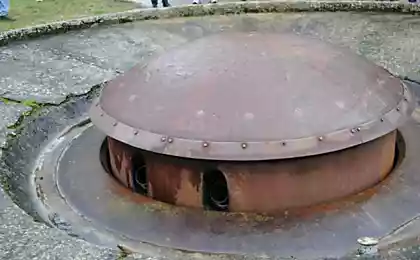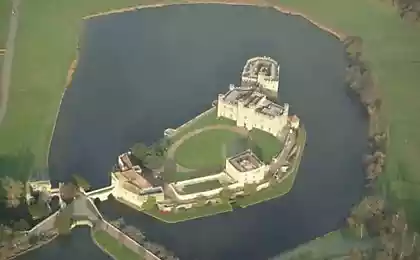396
Photo essay—a walk near the Royal pavilion in England
The beginning of the history of this magnificent Palace can be considered the 50-ies of the XVIII century, when in the small fishing village Bretherton that was not far from London, came to Dr. Richard Russell. Being a famous and respected doctor of the time, it offers a new kind of treatment for all diseases – a sea bath. Someone really helped, someone followed fashion, but soon Brighthelmston (which quickly grew up in Brighton) pulled a lot of rich people who want to have a house on the beach (for my health). One such person was the Prince of Wales, the future Prince Regent and then king George IV.

He first came to Brighton in 1783. on the advice of your doctor in order to treat gout. Town Prince liked it, since it was not the stiff London and the future king felt here very comfortable. Besides full swing developed his love affair with the commoner Mary Fitzherbert, whom he secretly married in 1785. in her London house. It is not surprising that the place of deployment of the secret wife choose Brighton. At first they lived in a rented house, but already in 1787. the Prince hires a famous architect Henry Holland and soon the house is transformed into a luxury Villa in neo-classical style. This creation is called the Marine Pavilion of His Royal Highness.

In 1812. the Prince of Wales becomes Regent and asked architect John Nash to carry out reconstruction and extension of Brighton Pavilion, and seeks to transform the Pavilion in a Palace in the likeness of an Indian, that he was worthy of the Mughals. Reconstruction only ended in 1822., but Nash brilliantly coped with the task is finished in a white palette, decorated with minarets and pointed domes of the Royal pavilion seems to be a part of the magic of India, miraculously transferred to English Brighton. The interior decoration is also made in Oriental style: the walls of the Central salon decorated with Chinese Wallpaper; stylized silver dragon supports a huge crystal chandelier in the Banquet hall; even cast-iron columns in the kitchen is made in the form of palm trees. It is said that when after the restoration George went to the Palace, he cried tears of joy.

Ascended the throne in 1837. Queen Victoria came to the Royal pavilion and felt that the building was too frivolous and not consistent with her style. 1850. The pavilion was sold to the City Council of Brighton, with Queen Victoria ordered me to take out at Buckingham and Kensington palaces, all the interior items (it took 143 railway car!). Some items, however, then returned. Since then, the Pavilion was visited by a hospital, concert hall, radar station. In 1982. was a large-scale restoration and a fully restored exotic interior.

Source: /users/87

He first came to Brighton in 1783. on the advice of your doctor in order to treat gout. Town Prince liked it, since it was not the stiff London and the future king felt here very comfortable. Besides full swing developed his love affair with the commoner Mary Fitzherbert, whom he secretly married in 1785. in her London house. It is not surprising that the place of deployment of the secret wife choose Brighton. At first they lived in a rented house, but already in 1787. the Prince hires a famous architect Henry Holland and soon the house is transformed into a luxury Villa in neo-classical style. This creation is called the Marine Pavilion of His Royal Highness.

In 1812. the Prince of Wales becomes Regent and asked architect John Nash to carry out reconstruction and extension of Brighton Pavilion, and seeks to transform the Pavilion in a Palace in the likeness of an Indian, that he was worthy of the Mughals. Reconstruction only ended in 1822., but Nash brilliantly coped with the task is finished in a white palette, decorated with minarets and pointed domes of the Royal pavilion seems to be a part of the magic of India, miraculously transferred to English Brighton. The interior decoration is also made in Oriental style: the walls of the Central salon decorated with Chinese Wallpaper; stylized silver dragon supports a huge crystal chandelier in the Banquet hall; even cast-iron columns in the kitchen is made in the form of palm trees. It is said that when after the restoration George went to the Palace, he cried tears of joy.

Ascended the throne in 1837. Queen Victoria came to the Royal pavilion and felt that the building was too frivolous and not consistent with her style. 1850. The pavilion was sold to the City Council of Brighton, with Queen Victoria ordered me to take out at Buckingham and Kensington palaces, all the interior items (it took 143 railway car!). Some items, however, then returned. Since then, the Pavilion was visited by a hospital, concert hall, radar station. In 1982. was a large-scale restoration and a fully restored exotic interior.

Source: /users/87
Stress in the womb increases the risk of overweight in adulthood
How to cook pasta without getting out foam hats























